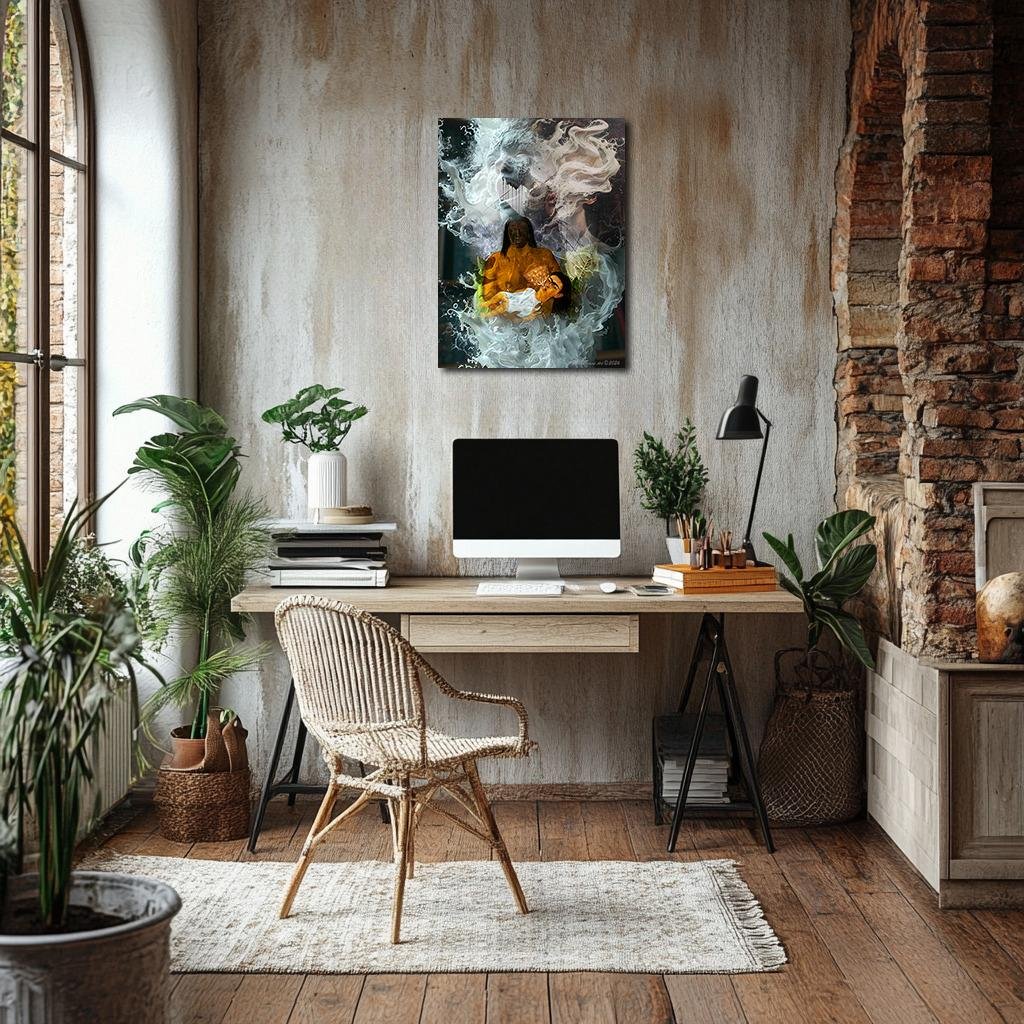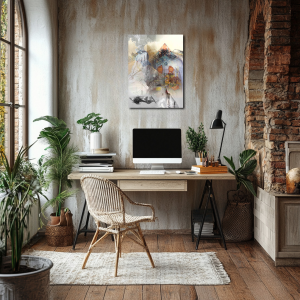Breath Between Bodies: Frida’s Silent Mothers
Breath Between Bodies reimagines Frida Kahlo’s My Nanny and I as a mist-wrapped landscape where survival, absence, and silent inheritance flow through flesh and spirit. Anchored by earthy ochres, ghostly whites, bruised violets, and muted greens, the piece conjures a world where fractured bonds pulse through every breath. Through swirling mists and heavy embraces, it honors Kahlo’s fierce acknowledgment of both the life given and the love withheld—and the silent strength that blooms between them.
Please see Below for Details…
Hotline Order:
Mon - Fri: 07AM - 06PM
404-872-4663
This conceptual reimagining of Frida Kahlo’s My Nanny and I unravels the intimate, haunting spaces between nurture and abandonment, drawing the invisible threads of loss, love, and survival into a swirling atmosphere of flesh and mist. Titled Breath Between Bodies , the piece expands Kahlo’s original confrontation with fractured motherhood into a fluid landscape where memory seeps and coils, where identities dissolve and reform in endless tides of longing.
At the center of the composition, Frida's infant form lies cradled awkwardly against the heavy, monumental body of her nanny—a figure rendered in earthy bronzes, half-human, half-myth. The nanny’s eyes are closed, her expression both sacred and detached, embodying the paradox of care without intimacy. Frida's small body appears both nurtured and forsaken, her tiny mouth latched to a breast flowing not with maternal affection but with a raw, elemental sustenance. This contact, both vital and sorrowful, becomes the silent engine of the entire scene.
Around them unfolds a cyclone of spectral forms: vaporous faces, ghostly hands, and melted, root-like tendrils spiraling through the mist. These figures are not spectators; they are fragments of fractured ancestry and identity, pressing against the living bodies with silent weight. Their blurred features and flowing hair suggest the chaotic inheritance of absence, a lineage where love is impersonal, and survival is a bodily fact before it is an emotional bond.
Color in Breath Between Bodies is layered like sediment in an ancient sea. The foundation is drenched in muted sepias, bronze ochres, and tender umbers, grounding the piece in a primal warmth that simultaneously comforts and oppresses. These earthy tones saturate the nanny’s skin and the infant Frida’s delicate limbs, creating a visceral sense of physicality—sweaty, raw, inescapably real.
Threading through the mist are veins of pale, ghostly white and muted platinum, creating the vaporous bodies that pulse and sigh around the living figures. These whites are not clean or angelic; they are weighty, tarnished by the sadness of time, evoking bone dust, milk, and the breath of forgotten ancestors. The swirling mist suggests that identity itself—both personal and national—is a fog of half-remembered tenderness and pain.
Deep within the flowing grays and silvers, subtle hints of bruised violets and sickly greens emerge, especially around the folds of the mist and the hidden faces. These bruised hues hint at sickness, mourning, and the complicated emotions buried beneath the surface of memory. They whisper that even nurture, even life itself, is tinged with sorrow when bonds are frayed or handed over to strangers.
The fluid atmosphere is lit by a diffused, muted light—a low, aching glow that feels less like sunlight and more like the weary breath of twilight. It fills the space with the melancholy weight of things unresolved: the missing mother's embrace, the love never fully received, the origin never fully claimed.
When I created Breath Between Bodies , I sought to embody the complex, unspoken realities of nurture and abandonment that Kahlo painted so ruthlessly in My Nanny and I . Her portrayal was not sentimental but brutally honest—a child fed but not cherished, a body cared for but not truly held. In this reimagining, I wanted to dissolve the boundaries between bodies and spirits, to suggest that these early fractures ripple outward forever, staining the waters of adulthood, identity, and creation.
The compositional rhythm moves like a slow, mourning tide: the weight of the nanny's form draws the eye downward into the small, vulnerable mass of the infant, then releases it upward through the swirling specters and into the thinning mist. There is no clean escape from the cycle; only movement, only breath between bodies, carrying all the weight of what was given and what was withheld.
In this vision, Frida does not accuse, nor does she forgive. She simply exists—tender, broken, infinitely enduring—a testament to the power of survival in the absence of perfect love.
Add your review
Your email address will not be published. Required fields are marked *
Please login to write review!
Looks like there are no reviews yet.








